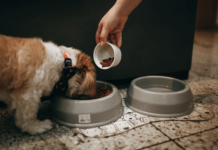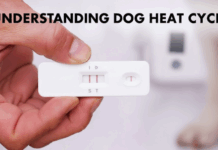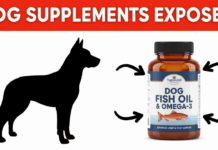Last Updated on February 13, 2023 by Dogs Vets
Smegma in Dogs, Symptoms, and Treatment
Dog smegma is an odd feeling for pet lovers and dog owners, especially when they spot that on their dog private area. Still, it is essential to know what kind of dog smegma affects your dog.
Moreover, this kind of condition gives pet lovers and dog owners a strange sensation, especially when they spot it on their dog’s private area. Still, it’s pretty essential to know what it is and what kind of sensation or irritation your dog is going through.
Let’s explore more about dog smegma cleaning, treatment, and prevention methods.
What is dog smegma?
Dog smegma is a condition that affects both male and female dogs and is characterized by the accumulation of an unusual substance in the genital area.
This condition can cause discomfort and even lead to more severe health issues if left untreated.
Understanding the symptoms, causes, and treatment of dog smegma is important for pet owners to ensure the health and well-being of their furry friends.
Dog Smegma is a yellow or greenish substance composed of oil and dead skin cells and yellow or green pus that can sometimes be found leaking from a dog’s private area.
Although this discharge is normal and rarely a cause for concern, you may want to check with your veterinarian if your pet is constantly licking his genital area.

First, to determine when something has gone wrong, it is essential to know what is expected when it comes to your dog’s private area.
However, suppose your dog regularly licks his genital area, especially if he is not neutered.
In some situations, it is more advisable to take your dog to the nearest veterinarian to be examined by him.
Symptoms of Dog Smegma
The symptoms of dog smegma can vary depending on the underlying cause and severity of the condition. Some common symptoms of dog smegma include:
- A foul odor in the genital area
- Irritation and redness in the genital area
- Accumulation of a waxy, cheesy substance in the genital area
- Pain or discomfort during urination
- Difficulty or reluctance to urinate
- Swelling or tenderness in the genital area
- Loss of appetite
- Depression or lethargy
What Causes Dog Smegma?
There are several causes of dog smegma, including:
- Poor hygiene
- Allergic reactions
- Hormonal imbalances
- Skin infections
- Inflammation of the genital area
- Obstruction of the urinary tract
On the outer side of your dog’s private area, you will find a thin outer layer called sheath – the skin and other tissues surrounding the private area, if not up.
One point we have to make is that a healthy Dog Private is both pink or could be reddish.
It is mainly caused by the covering mucous membrane on the dog’s private area.
Occasionally, at the inception of the prepuce at the end of your dog’s private area, a tiny amount of yellow liquid or greenish and colored discharge may collect.
It is known as smegma and is very common in healthy dogs.
Understanding the Causes of Dog Smegma
Dog smegma is a natural byproduct of the skin’s natural oils and dead skin cells.
The accumulation of these substances can be exacerbated by certain factors, including obesity, poor grooming habits, and skin conditions such as yeast infections or allergies.
Male dogs are particularly prone to smegma buildup because of their anatomy.
The skin in this area is prone to folds and creases, making it easier for smegma to accumulate. Dogs with naturally oily skin may also experience more smegma buildup than those with drier skin.
The Dangers of Dog Smegma
Unchecked smegma buildup can lead to a range of health problems for your dog. Some of the most common issues include:
- Skin irritation: Smegma can cause itching, redness, and inflammation in the affected area. This can be uncomfortable for your dog and may lead to more serious skin conditions if left untreated.
- Infection: The moist and warm environment created by smegma buildup provides an ideal breeding ground for bacteria and yeast. This can lead to painful and uncomfortable infections, which can be difficult to treat and may require antibiotics or other medications.
- Odor: Smegma buildup can produce unpleasant odors, which can be uncomfortable for you and your dog. This can make it difficult to enjoy spending time with your pet and may impact your quality of life.
Preventing Dog Smegma
Preventing dog smegma is relatively simple and can be accomplished through regular grooming. Here are some steps you can take to keep your dog’s genital area clean and healthy:
- Clean the area regularly: Regular cleaning of the genital area can help prevent smegma buildup and reduce the risk of skin irritation, infection, and unpleasant odors. This should be done using a mild soap and warm water, taking care not to cause any irritation.
- Trim hair around the genital area: Long hair around the genital area can make it easier for smegma to accumulate, so it’s important to keep the hair trimmed. This can be done at home or by a professional groomer.
- Keep your dog at a healthy weight: Obesity can exacerbate smegma buildup, so it’s important to keep your dog at a healthy weight. This can be done through a balanced diet and regular exercise.
- Address underlying skin conditions: If your dog has skin conditions such as yeast infections or allergies, it’s important to address these underlying issues in order to prevent smegma buildup. This may require veterinary care and medication.
Is my dog’s private area infected?
Pet owners often worry that their dog’s private area is infected. Sometimes what you might think is pus – a sign of infection – is just normal smegma.
Even healthy dogs produce a surprising amount of smegma and often lick their private area to remove it.
However, drainage from the foreskin and excessive licking is also the most common symptoms of penile and/or sheath infections, so determining what is normal and potentially problematic can be difficult.
Do not hesitate always to schedule an appointment with your veterinarian if:
- Your dog licks his private area more than he usually does
- Your dog seems restless or otherwise ill.
- The discharge from his private area has increased in amount or change in color.
Why does my dog lick his private area?
A dog will lick his private area from time to time to keep it clean and healthy, or probably just because it feels good.
Some dogs could lick practically self-stimulate in other ways to the point where they get erections, even when neutered.
It’s best to overlook this behavior unless you also notice problems with your dog’s private area or changes in his overall health.
Excessive licking, especially when associated with symptoms such as increased drainage, pain, or lethargy, could also be a sign of an infection, injury, or other conditions affecting your dog’s urinary or reproductive tract infection.
Remember always to call your veterinarian if you have any concerns.
Why is blood always coming out from my dog’s private area?
Blood can be seen coming from a dog’s private area due to injuries to the private area or foreskin, conditions affecting the urinary tract (infections, tumors, bladder stones, etc.), Blood clotting disorders, and prostate gland disease.
The most likely obvious causes of bloody discharge from the private area in an unneutered dog are benign prostatic hypertrophy (BPH), a non-cancerous enlargement of the dog’s prostate gland with testosterone exposure.
A veterinarian can often determine if a dog has BPH by feeling the prostate gland during a rectal exam. Spaying will cure most cases of canine BPH.
A veterinarian should evaluate any dog that has blood coming from its private area.

Why is my dog’s private area is blocked?
Dogs will have occasional erections, even when they are neutered.
If your dog’s private area naturally becomes erected and visible for a period of time but then returns fully enclosed in the foreskin and everything else seems to be normal, you probably do not have anything to worry about in this case.
That being said, dogs will sometimes have persistent erections or cannot retract the private area into the foreskin due to hair surrounding the private area, neurological issues, prostate disease, or anatomical abnormalities.
If the private area of your dog is discolored or the normally moist tissues covering it are drying out, take your dog to see a veterinarian immediately.
In these cases, difficulty with urination and permanent damage to the private area can occur without prompt treatment.
Why dog’s genital area is swollen?
If your dog’s genital area is swollen, it could be a sign of an underlying health issue, such as an infection, an allergic reaction, or a skin condition.
Swelling in the genital area can also be caused by an accumulation of smegma, which can block the normal flow of oils and fluids in the area.
If you suspect your dog may have an issue with swelling in the genital area, it is important to seek veterinary care as soon as possible to determine the underlying cause and receive appropriate treatment.
But, if your dog’s private area remains enlarged for an extended period of time, or if you notice other troubling symptoms such as lethargy, poor appetite, discomfort, or abnormal discharge from the foreskin, you should call your veterinarian for advice.
Problems such as infections, injuries, and tumors can also make a dog’s private area look swollen.
What is the rash on my dog’s private area?
The skin-covered foreskin surrounding a dog’s private area can develop rashes, just like any other area of the body.
Because the foreskin touches the ground every time a dog sits or lies down, it often comes in contact with certain irritations, allergens, and insects that could also bite.
Certain parasites or skin infections can also cause rashes on a dog’s PRIVATE area foreskin.
Bathing your dog using cold water and a mild soap may help if your dog’s rash has developed due to contact with an allergen or irritant.
Severe rashes produce a significant amount of discomfort and persist for more than a day, or 2 should be evaluated by a vet.
What is this bump, lump, or growth on my dog’s private area?
A bump, lump, or growth in your dog’s private area can be caused by a variety of factors, including infection, inflammation, tumors, and other growths. Some common causes of lumps or bumps in the genital area include:
- Cysts: Small, fluid-filled sacs that can form on the skin.
- Warts: Small, raised growths caused by the canine papillomavirus.
- Abscesses: Pus-filled infections that occur when bacteria enters the skin through a break, such as a bite or scratch.
- Tumors: Abnormal growths that can be benign (non-cancerous) or malignant (cancerous).
If you notice a bump, lump, or growth on your dog’s private area, it is important to have your dog examined by a veterinarian as soon as possible to determine the underlying cause and receive appropriate treatment.
Your veterinarian may need to perform diagnostic tests, such as a biopsy or ultrasound, to determine the cause of the growth and plan an appropriate course of treatment.
In some cases, a lump or bump on the genital area may be nothing to worry about, but it is always better to be safe and have your dog examined by a veterinarian to ensure their health and well-being.
There are many potential causes. In addition to:
1. Affects of the foreskin, including neoplasm (cancer), injury, foreign body, or inflammation of the private area/foreskin (balanoposthitis).
2. Defects of the urethra, including neoplasm, trauma, or stones (calculi).
3. Bladder defects, including infection, stones, inflammation, or neoplasm.
4. Abnormality in the prostate, including prostate (prostatitis), neoplasm, enlargement (hyperplasia), infection, or inflammation of cyst or pus.
5. Bleeding disorders including platelet count (thrombocytopenia) or taking rat poison (coagulopathy)
6. Urinary incontinence (inability to hold urine) Ectopic ureter (abnormally positioned) or dysfunctional sphincter (tissue that acts as a port, regulating the release of urine)
5. The presence of foreskin discharge is most often from a mild and relatively harmless disorder to severe and fatal type disease (such as coagulopathy)
Dog Smegma and Infection Symptoms
- Spotting
- Could be swelling or inflammation associated with the prepuce/private area
- Excessive licking on private area
- Any other discharge
- Lethargy
- Sudden Fever
- Lack of appetite in a dog
Is Smegma Problematic?
Dog smegma can sometimes be a sign of more severe problems; Look for foul-smelling leaks, bladder swelling, excessive licking, or dripping.
Even if we mistake some severe problems as normal smegma, the consequences will also be severe.
Any of these features could indicate the following:
- A urinary tract infection or inflammation of the bladder.
- Bacterial Infections.
- Tumors, injury, or stones in the urine.
- Allergies that affect the skin.
- Reproductive health problems.
- Inflamed private area.
- External injuries.
- Prostate disorders.
IF YOU AT ANY POINT NOTICE ANY UNUSUAL SYMPTOMS THAT CONCERN YOU, CONTACT YOUR VETERINARIAN AS SOON AS POSSIBLE.
Your Dog Smegma Treatment
In most cases, smegma does not require any form of treatment.
However, suppose your dog is constantly licking his genitals or has a heavy discharge. In that case, you should always have your dog tested by your veterinarian, who will also do the following set of actions:
- He will help get a complete physical examination for your pet and include a full and thorough examination report of your dog’s genitals area.
- He will also perform screening tests, including a complete blood count, to determine infection or inflammation.
- Take a discharge specimen for cytology (cell) and bacterial culture.
- Your veterinarian will review X-rays of your dog’s abdomen for prostate abnormalities.
- He will also perform an ultrasound to examine your dog’s abdomen more thoroughly.
How to Clean Dog Smegma at Home
Dog smegma can be an uncomfortable and even painful condition for your furry friend.
If left untreated, it can lead to more serious health issues. Fortunately, there are steps you can take to clean dog smegma at home and help alleviate the symptoms of this condition.
In this section, we will discuss the steps you can take to clean dog smegma at home and keep your pet healthy and comfortable.
Step 1: Gather the Necessary Supplies
Before you begin cleaning your pet’s smegma, you will need to gather the necessary supplies. These may include:
- Antibacterial soap
- Warm water
- A washcloth or cotton pads
- Hydrogen peroxide
- Clean towels
- A clean, dry area for your pet to rest after the cleaning process.
Step 2: Bathe Your Pet
The first step in cleaning your pet’s smegma is to give them a warm bath.
Use a gentle antibacterial soap to clean the affected area and rinse thoroughly with warm water. It is important to be gentle and avoid irritating the sensitive skin in the genital area.
Step 3: Clean the Genital Area
After bathing your pet, you will need to clean the genital area. Soak a washcloth or cotton pad in warm water and gently clean the affected area.
Avoid using anything that is too rough, as this can irritate the skin and make the condition worse.
Step 4: Apply Hydrogen Peroxide
After cleaning the genital area, you can apply hydrogen peroxide to help kill any bacteria or yeast that may be contributing to the smegma.
To do this, simply apply a small amount of hydrogen peroxide to a cotton pad and gently clean the affected area. Be sure to rinse the area thoroughly with warm water after applying the hydrogen peroxide.
Step 5: Dry Your Pet
After cleaning the genital area, be sure to dry your pet thoroughly. Use a clean towel to pat the affected area dry and then let your pet rest in a clean, dry area until they are completely dry.
Step 6: Monitor Your Pet’s Health
It is important to monitor your pet’s health and well-being after cleaning their smegma. If you notice any signs of worsening symptoms, such as increased pain, redness, or swelling, it is important to seek veterinary care as soon as possible.
When does Dog Smegma Stop?
Smegma dog is actually good, especially during intercourse; smegma acts as a lubricant for regular intercourse and should not really stop completely.
Keeping your dog neutered to reduce the amount of sigma it produces is the best way to avoid building smegma.
To prevent infection, some have found a supplement containing green tea, known for its antibacterial properties, which may be helpful as it is always best to seek medical treatment first and follow your veterinarian’s advice before offering any treatment.
Schedule an appointment with your vet if you have concerns about the health of your dog’s private area.
Conclusion Overview
Dog smegma is a common problem for male dogs, but it can be prevented with proper grooming and care.
By cleaning the genital area regularly, keeping the hair trimmed, and addressing underlying skin conditions, you can keep your dog’s genital area healthy and free from unpleasant odors and potential health problems.
What causes dog Smegma?
Smegma is a type of white, cheesy, and greasy substance that accumulates on the surface of a dog’s skin. It can also be found in other mammals such as cats and rodents. The main cause for smegma production is the sebaceous glands.
It was first discovered by Dutch zoologist Coenraad Jacob Temminck in 1838. He named it “semen” or “smegma“. In 1839, French zoologist Henri Milne-Edwards described it as “a yellowish secretion” that was made up of fatty acids, proteins, and lipids.
Fact Check
We strive to provide the latest valuable information for pet lovers with accuracy and fairness. If you would like to add to this post or advertise with us, don’t hesitate to reach us. If you see something that doesn’t look right, contact us!
Reference: Petmd.com

















